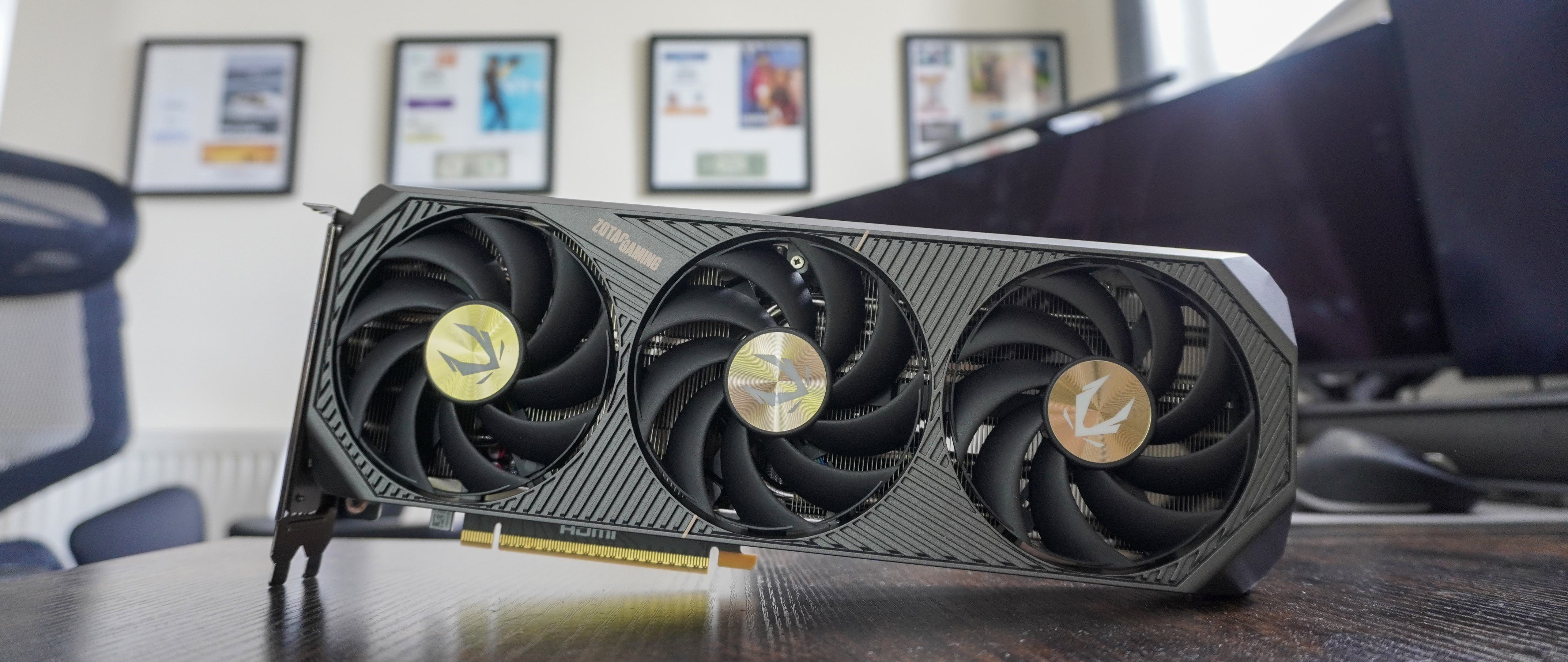Tom's Guide Verdict
With Nvidia's RTX 5060 Ti 16GB being the optimal mid-range choice, the minor improvements of the RTX 5070 put it in no man’s land. It’s a good GPU for 1440p gaming (and 4K with DLSS), and it offers some nice generational upgrades. But 12GB of video memory is not enough for what you're paying when the RTX 5070 Ti and AMD Radeon RX 9070 XT are right there.
Pros
- +
Strong 1440p gaming
- +
DLSS 4 unlocks good 4K performance too
- +
Solid for content creation
- +
Quiet and doesn’t run too hot
Cons
- -
…It’s not “4090 performance”
- -
Only 12GB of video memory
- -
You can get better performance with older GPUs
- -
MSRP is a mess
Why you can trust Tom's Guide
With how strong the RTX 5070 Ti is, and the surprisingly good RTX 5060 Ti (with 16GB of video memory), I’m confused by Nvidia’s RTX 5070. Like, who is this for?
Not to say it’s bad at the job of playing games and boosting content creation workloads. There’s a solid generational uplift over the 4070 Super when it comes to raw rendering and AI, and it does get you all the DLSS 4 goodness including multi-frame generation. Without any AI trickery, it’s a solid 1440p card, and with it turned on, you can game at 4K with buttery smooth frame rates.
But the problems do start appearing when you see this only has 12GB of video memory on a 192-bit memory bus, which in a card that is selling for nowhere near the $549 MSRP is not kosher.
The memory bus (how much data can be moved per clock cycle) is one thing, but to have 4GB less in here than the cheaper 5060 Ti is an odd choice – especially given how demanding certain games can get when ratcheting up the graphics settings.
Also, when you start to see that the cheaper RTX 4070 Super has better performance in some games, it can leave a bit of a bad taste in your mouth. And that’s before you even address the AMD elephant in the room. The RX 9070 outperforms consistently and is available for cheaper, and you can even get the mightier RX 9070 XT for a lower average price than Nvidia’s option.
If you’re super invested in the Nvidia space and you’re coming from a 20 or 30-series card, there’s something to be had here. But also, I’d suggest you either jump up to the 5070 Ti for a truly big jump in performance, the 5060 Ti for better value for money, or can I tempt you with Team Red?
For frame of reference, we are using some testing data from our friends over at Tom’s Hardware. If you're looking for more dense detail and analysis on specific cards, our sister site is the best place to go!
Nvidia GeForce RTX 5070: Cheat Sheet
- What is it? This is a mid-range PC graphics card.
- Who is it for? This is for people who are looking for smooth 1440p gaming performance at high-maxed settings, or 4K gaming with DLSS.
- What does it cost? MSRP starts at $549, but the average price when checking retailers is $750 at the time of writing. The cheapest you can get is $609.
- What do I like? There is a solid performance increase here, and DLSS 4 with multi-frame gen does provide much more bang for your buck. On top of that, if you’re dabbling in GPU-intensive 4K video editing or animation, the RTX 5070 does a solid job of keeping up with your workload.
- What don’t I like? The MSRP is just completely non-existent, 12GB of video memory is just not enough for the increasing demand of games in the future at this fidelity, and you can get better cards for cheaper.
Nvidia GeForce RTX 5070: Specs
| Header Cell - Column 0 | RTX 5070 | RTX 4070 Super |
|---|---|---|
Price (MSRP) | $549 | $599 |
Video memory | 12GB GDDR7 | 12GB GDDR6X |
RT Cores | 48 4th Gen cores | 46 3rd Gen cores |
Tensor Cores | 192 5th Gen cores | 224 4th Gen cores |
CUDA Cores | 6,144 | 7,168 |
Power consumption (TDP) | 250W | 220W |
Ports | 1x HDMI 2.1b, 3x DisplayPort 2.1b | 1x HDMI 2.1, 3x DisplayPort 1.4a |
The Tom’s Guide test PC

Packed into that classy Fractal North gaming case, you'll find the AMD Ryzen 7 9800X3D CPU, 32GB of Corsair DDR5 RAM and SanDisk's WD_Black SN8100 PCie Gen 5 SSD. There's a Corsair 850W power supply on board, everything is attached to the Asus TUF Gaming B850-Plus Wi-Fi 7 motherboard, and eliminating thermal throttling is the FrostFlow 200 Series CPU cooler.
Nvidia GeForce RTX 5070: 3DMark tests
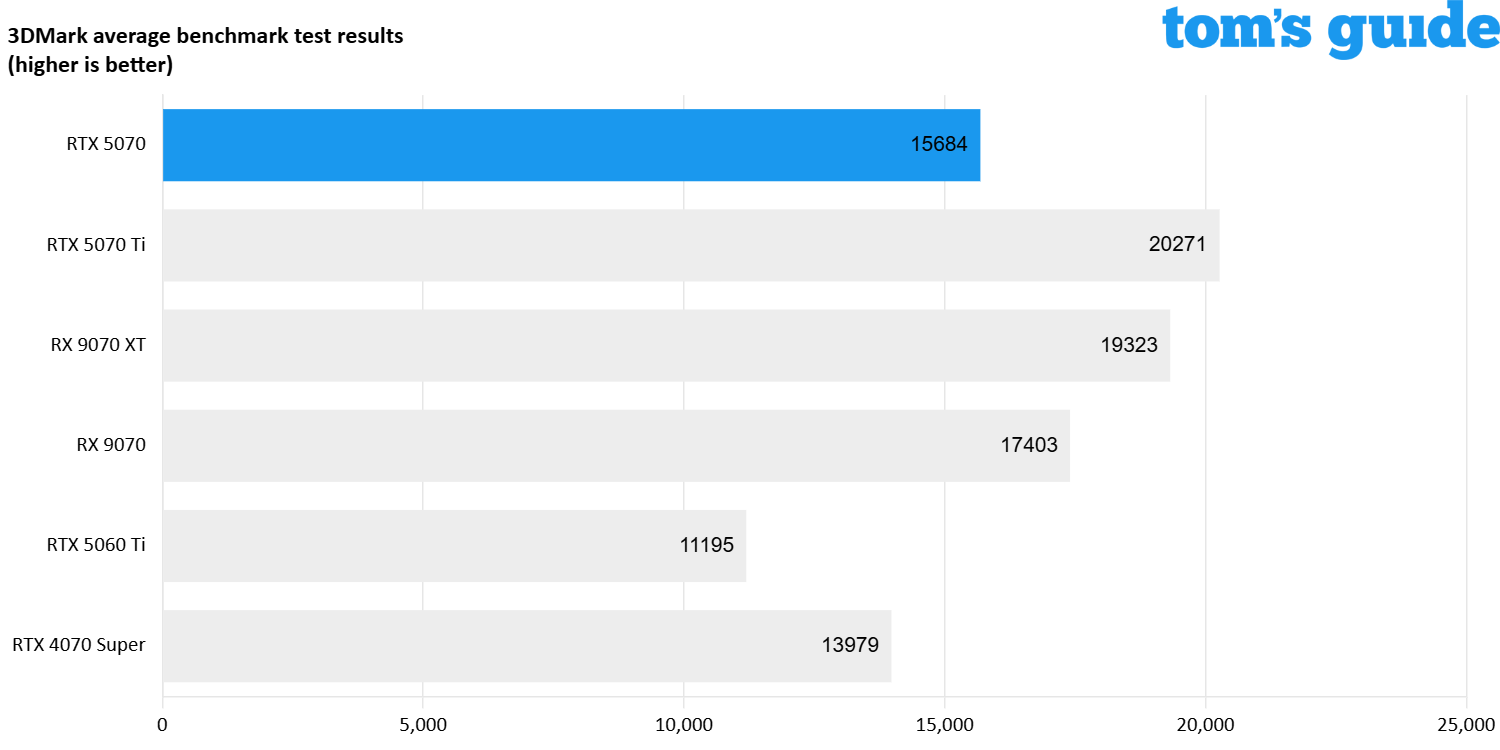
Nvidia GeForce RTX 5070: The ups
I know the RTX 5070 gets lost in the mix of other GPUs out there, but there are two key strengths to this card – bridging the gap between 1440p and 4K performance, and providing a zen-like balance between being a good gaming GPU and boosting your AI and creative workflows.
Get instant access to breaking news, the hottest reviews, great deals and helpful tips.
Playing well

While the RTX 5060 Ti is strictly a 1440p card in my books, the 5070 has a little more wiggle room between 1440p and 4K in my own testing. Yes, a lot of this comes down to DLSS 4 in some games, but in some of your better-optimized games, you can find pretty decent numbers that duke it out with the RX 9070.
GPU | Cyberpunk 2077 ray tracing ultra 1440p | Forza Horizon 5 max settings 1440p |
|---|---|---|
RTX 5070 | 41 FPS | 171 FPS |
RTX 5070 Ti | 53 FPS | 196 FPS |
RTX 5060 Ti | 30 FPS | 121 FPS |
RX 9070 XT | 68 FPS | n/a |
RX 9070 | 46 FPS | n/a |
RTX 4070 Super | 44 FPS | 136 FPS |
Is this enough to warrant improvements over the RTX 4070 Super? Sort of, but the gen-on-gen improvement are small or non-existent (more on that later).
But of course, you flip the switch on making the most of those AI capabilities with DLSS 4 and multi-frame gen, and you’ll see those numbers comparatively skyrocket.
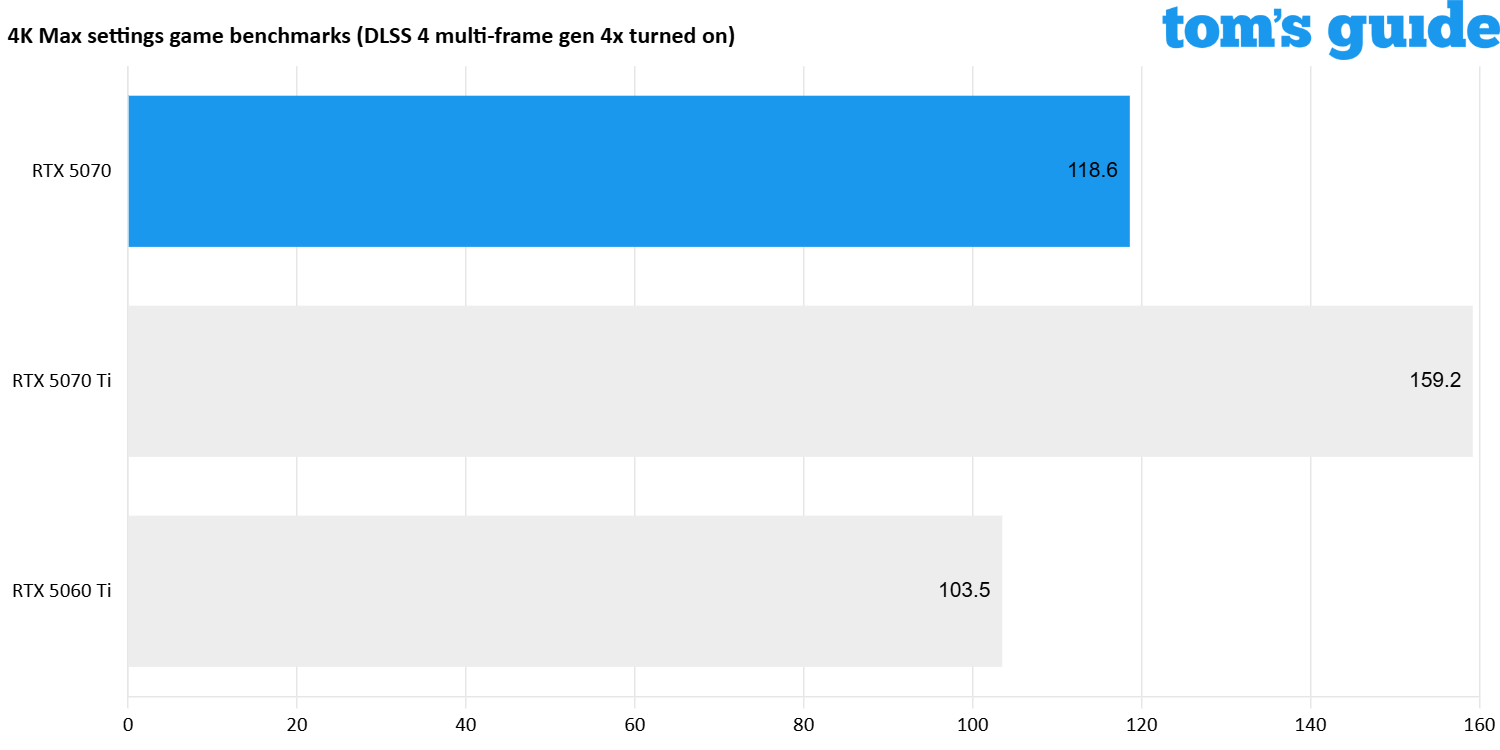
Moving from the Convolutional Neural Network (CNN) of DLSS 3 to the Transformer Model of DLSS 4 (working smarter like ChatGPT does) results in smoother frame rates with improved 1% lows, and drastically cuts the amount of ghosting that appears around fast moving objects.
That being said though, the RTX 5070 is a little too close for comfort to the RTX 5060 Ti.
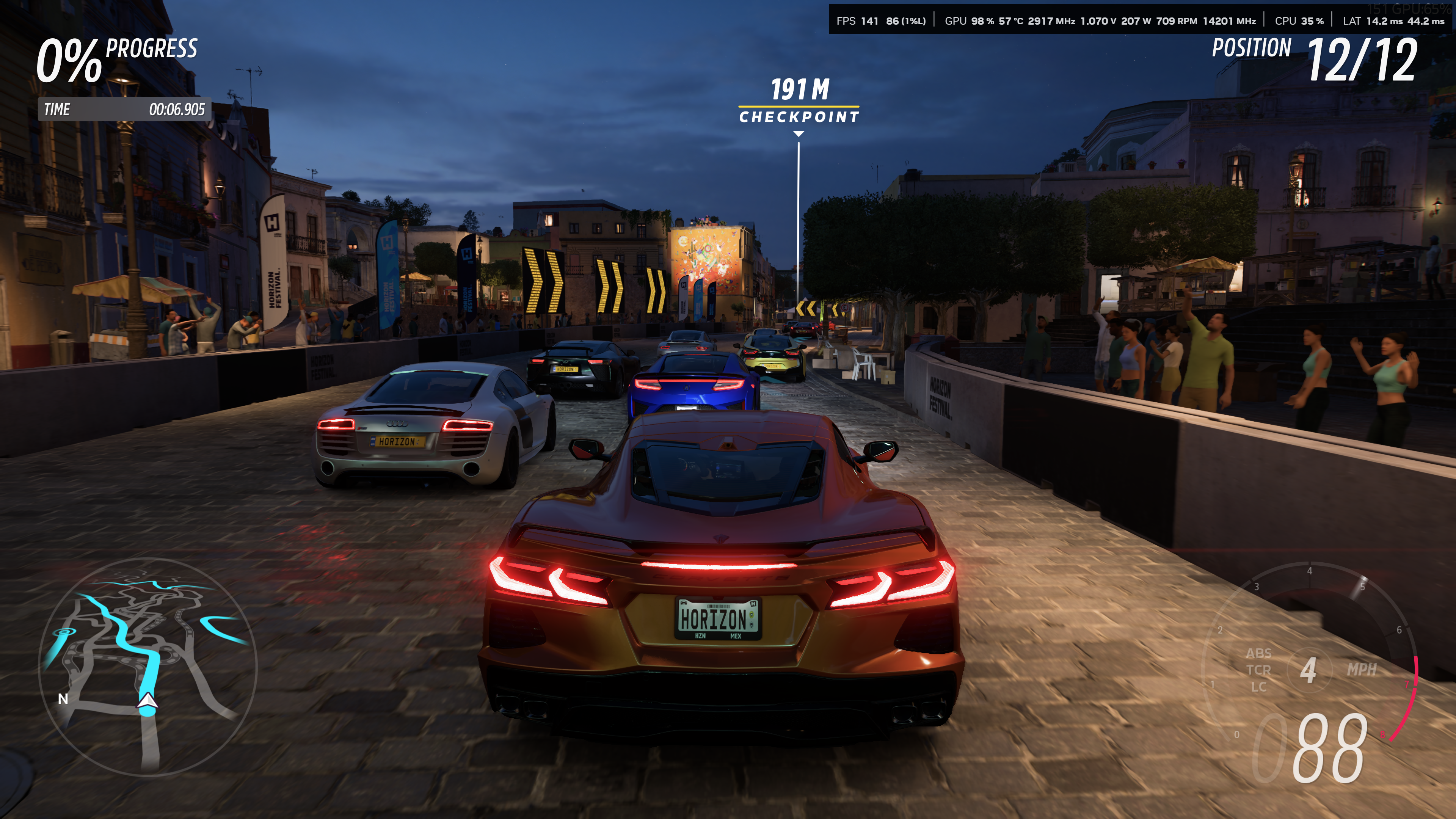
Of course, if you do pixel peep, you could identify small imperfections around finer details like hair or leaves on a tree. But who’s really spending their time not playing games and looking at hair!? …except for me…moving on.
As to the point of latency that could be caused by DLSS (Nvidia is stuffing AI frames in between rendered frames – that doesn’t make a game more responsive), Reflex does a stellar job in keeping the response time to below 10ms. Of course, to get lower in competitive games, you can tinker with the settings, but for most gameplay, this is OK.
Best of both worlds

If you’re a bit like me and you want to do more with your PC than just games, the 5070 is pretty great at creative work and AI-driven performance too.
Not great enough to beat the 4070 Super again (awkward). But for getting stuff done, the Blackwell architecture stands head and shoulders above AMD’s GPU offering.
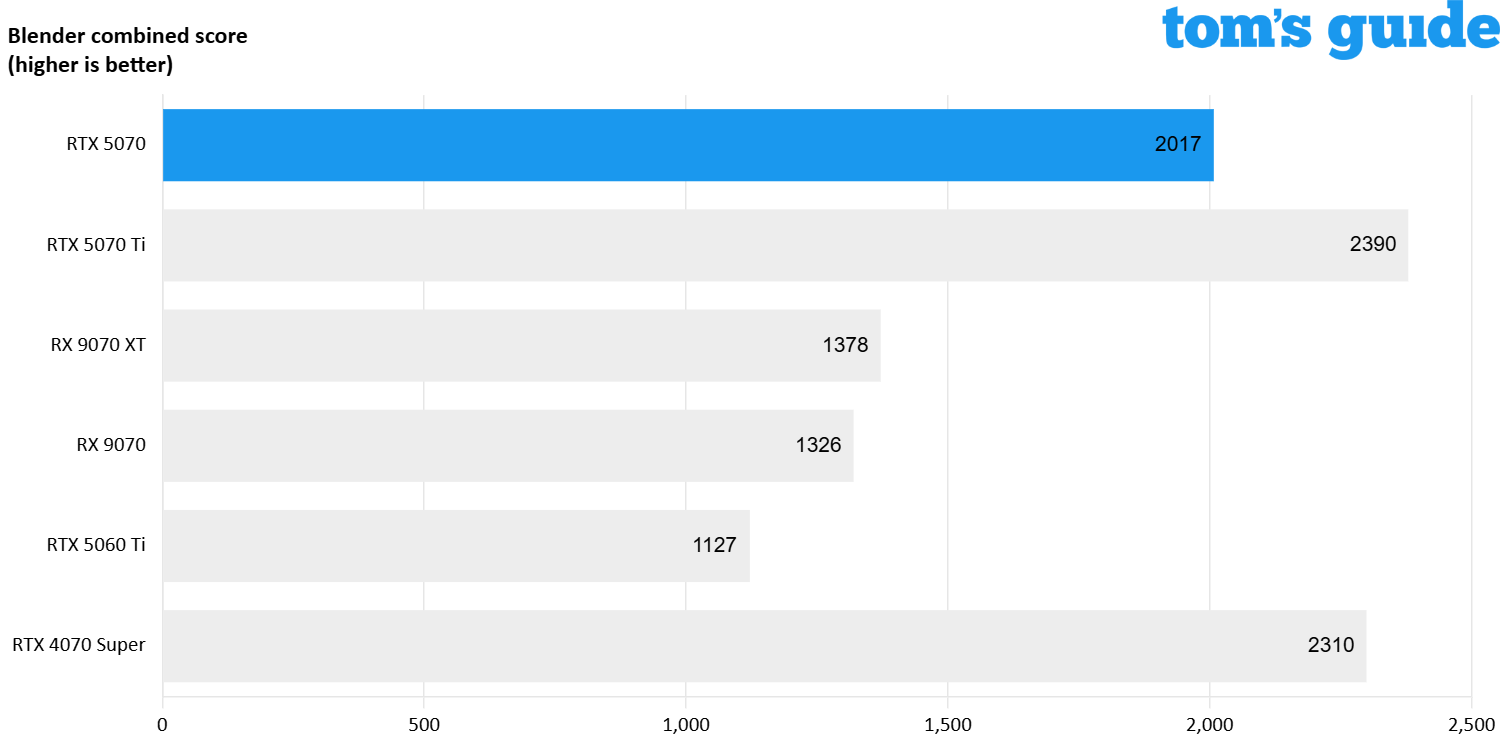
This puts the RTX 5070 a lot closer to the 5070 Ti than I expected, and a strong Blender score means great rendering performance for the likes of content creation and animation. Meanwhile, over on the AI side, it’s not really a competition here.
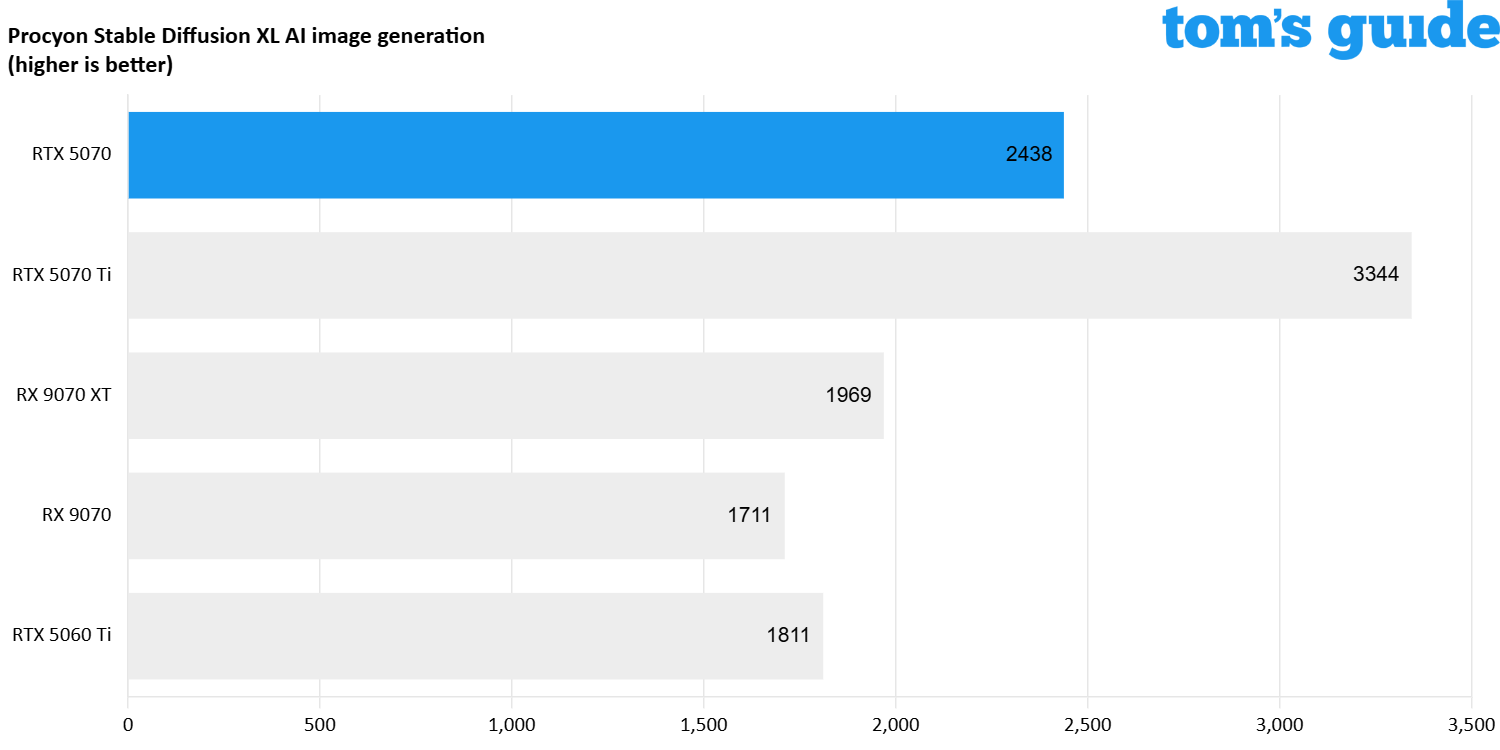
Given that Nvidia has been busy transforming into the picks and shovels company for the AI gold rush, this is no real surprise. And that AI performance doesn’t just serve improved game performance, it can help you with running local LLMs, image generation, and AI-infused tasks on the likes of Photoshop.
Nvidia GeForce RTX 5070: The downs
All sounds good on paper, but you can’t just view the RTX 5070 in a vacuum. Once you take a look around, you start to see why it’s a little bit lost in the shuffle. By the way, I’m glad Nvidia has scrubbed the “4090 performance in a 5070” statement from its website – given the trickery you’d have to use to get there.
Older cards can swallow it up

Yes, the AI superpowers of this card are great and all that, but DLSS can become a distraction from the fact that in terms of raw rendering performance, the 5070 is seemingly aped by the AMD Radeon RX 9070 XT and RTX 4070 Super. Plus the cheaper RX 9070 comes too close for comfort in the tables above.
And in terms of futureproofing for the next few years of use, 12GB of GDDR7 video memory is good enough for the games of today. But in the desktop gaming space, I’d personally take more at a lower bandwidth from the likes of AMD or the RTX 5060 Ti to ensure smoother performance as titles get more demanding.
Especially at the price you’re expected to pay…
There are better value options
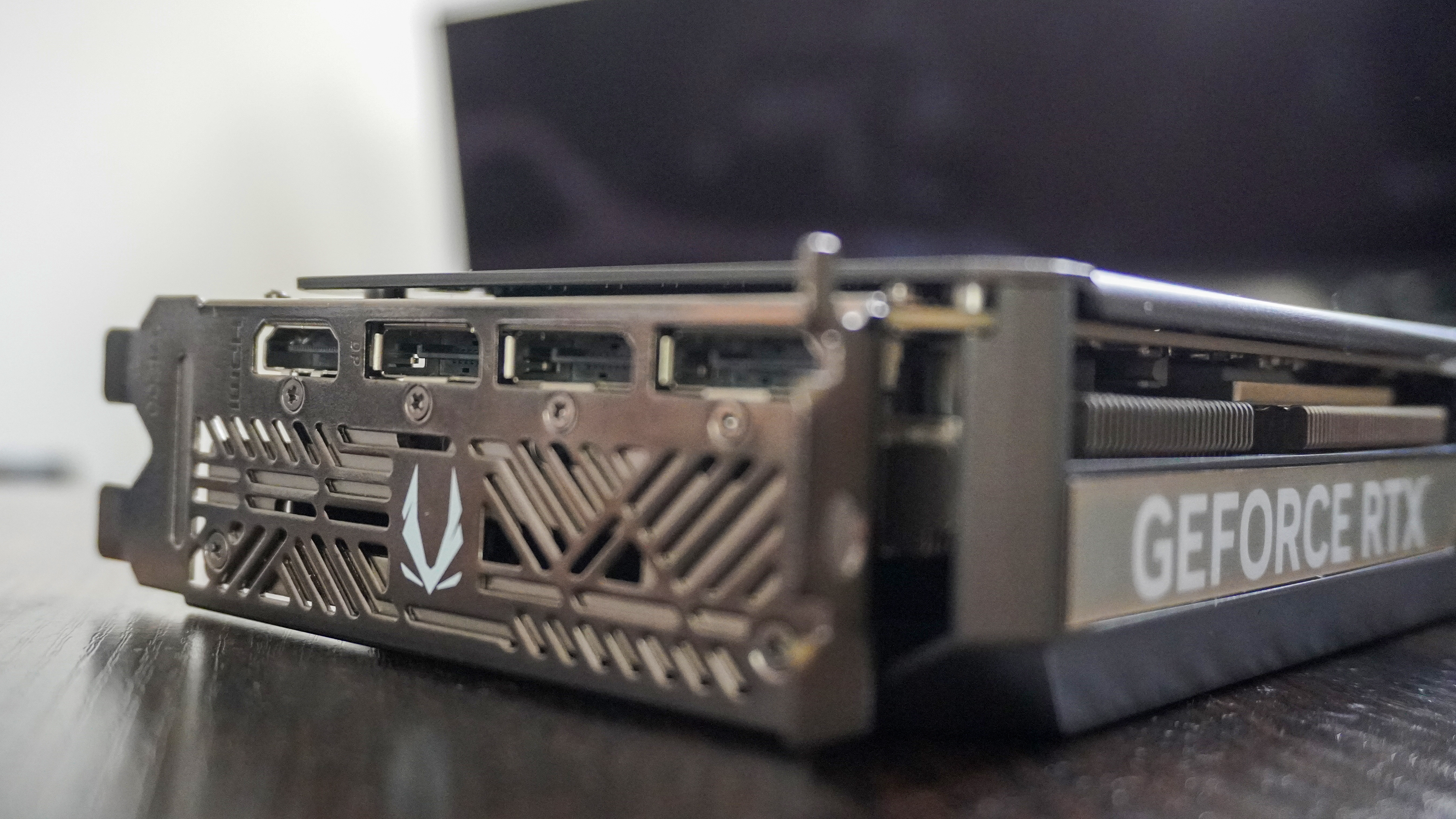
The GPU market has been rough over the past few months. Not for everyone, luckily. The RTX 5070 in the U.K. is supposed to sell for £539, but you can pick one up with prices starting at £529 right now.
But over in the U.S., it’s a very different story. MSRP is $549, but the cheapest I’ve been able to find is $609 with the average cost coming in at $750 across the many that are available. Given the performance you get, this drastic uplift in cost prices it out of the range I’d say is acceptable to pay.
That isn’t to say other cards are bearing the brunt of this too, as the average price of the RX 9070 is around $720 and the XT is mooning at $820 average right now. Plus, it seems like retailers have cottoned onto the 4070 Super being a more powerful GPU in certain areas, and that average price has skyrocketed.
All I’m saying is if you can wait, then please do so until more stock comes in and the prices normalize.
Nvidia GeForce RTX 5070: Verdict

So while the RTX 5060 Ti is the GPU where DLSS 4 makes sense, and the 5070 Ti is a monster in my own testing, the 5070 is caught between a rock and a hard place.
In my two months using it, there is some fun to be had with the AI features and power you can extract from it.
But the raw performance is just not there when compared to the competition and cheaper Nvidia cards of last generation – leaving it as the awkward middle child of the range that’s good, but not great. And certainly not worth the average retail price of $750 (at the time of writing this).
And for this asking price, AMD is right there – ready to swoop up your cash and give you something that is a little more futureproofed with more video memory and stronger performance.

Jason brings a decade of tech and gaming journalism experience to his role as a Managing Editor of Computing at Tom's Guide. He has previously written for Laptop Mag, Tom's Hardware, Kotaku, Stuff and BBC Science Focus. In his spare time, you'll find Jason looking for good dogs to pet or thinking about eating pizza if he isn't already.
You must confirm your public display name before commenting
Please logout and then login again, you will then be prompted to enter your display name.
